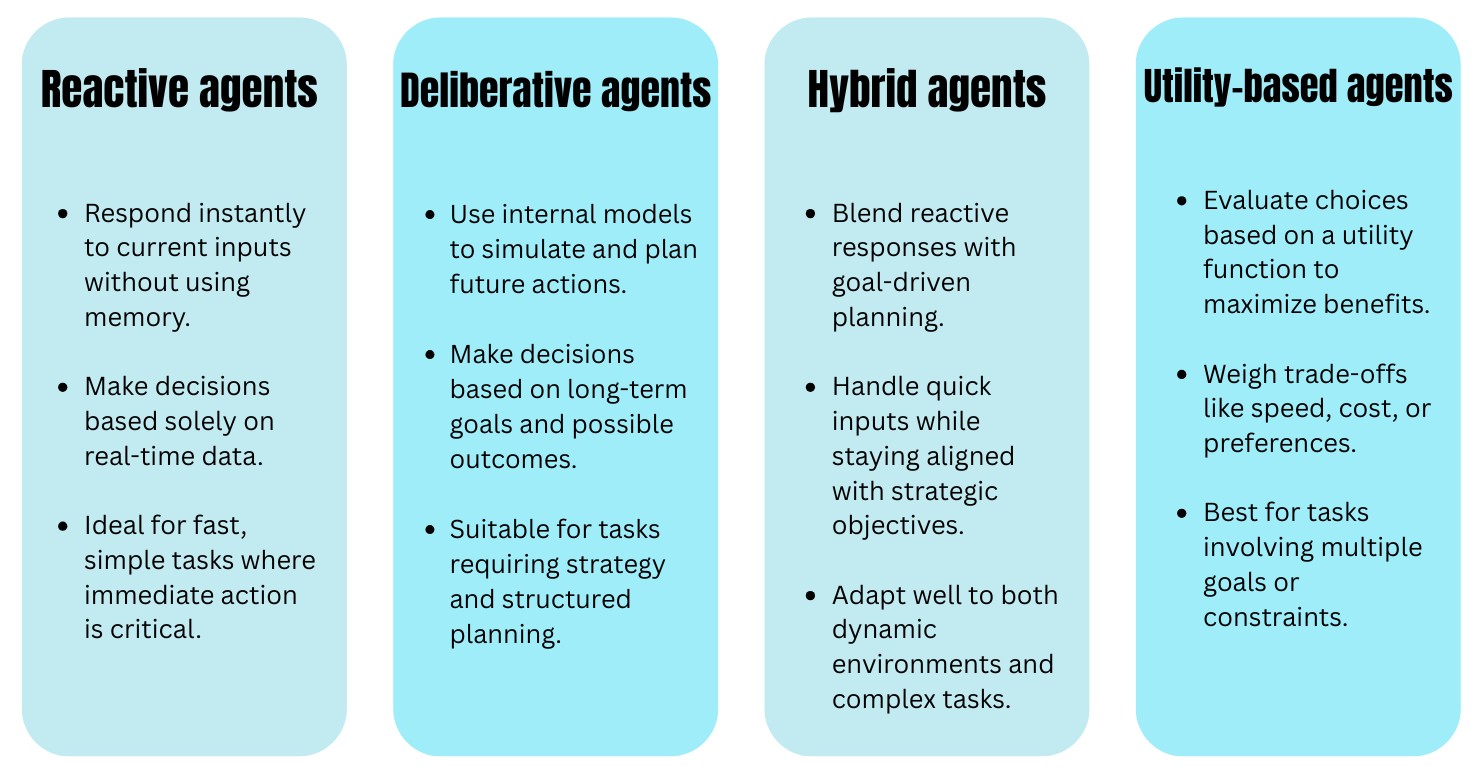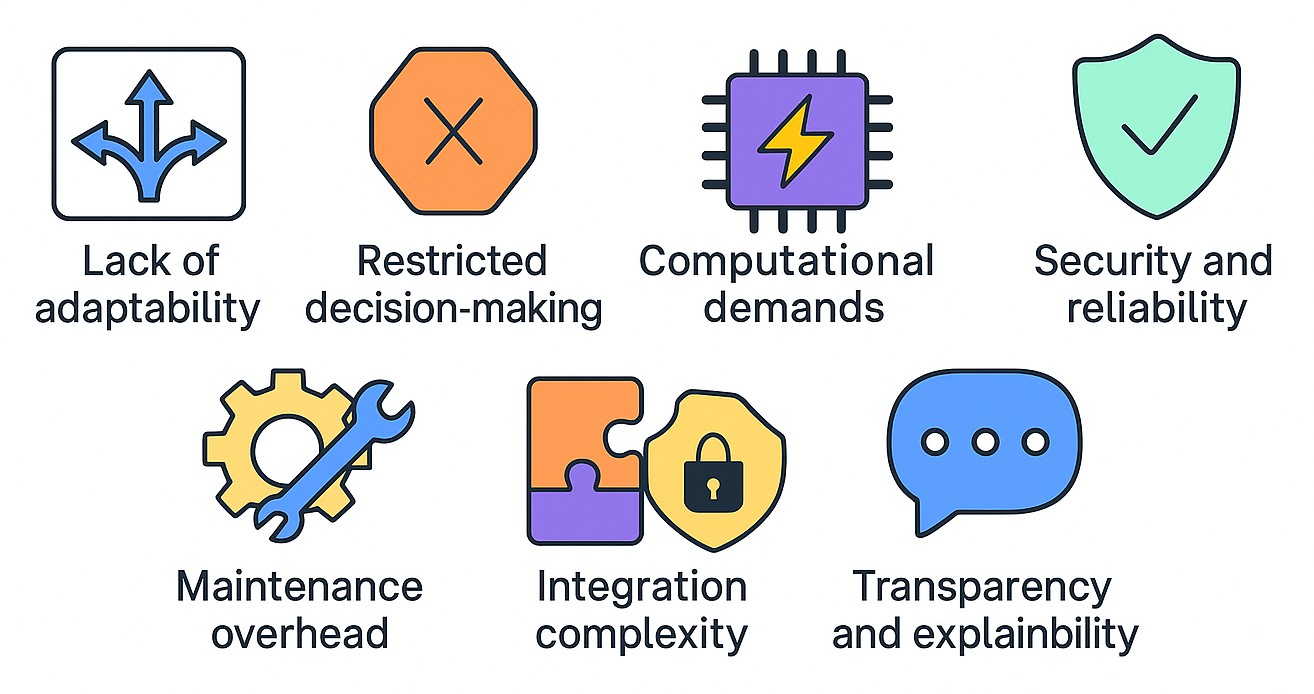What are Autonomous Agents?

Team Thinkstack
May 16, 2025
Table of Contents

Autonomous agents are software-based systems that can make decisions and perform tasks without ongoing human direction, and in some cases, it is integrated into physical machines like robots to interact with the real world. The ability to respond to changes in the environment and act proactively based on internal goals is what sets them apart from traditional software programs.
While capable of operating independently, it often has limited ability to perceive and understand its environment fully. Unlike more advanced autonomous AI agents, which incorporate complex AI capabilities like reasoning, learning, and long-term adaptation, autonomous agents operate within a narrower scope.
It is designed to act independently within a given environment, using a defined set of rules or behaviors to achieve specific goals. These agents work without constant human input, using internal logic to sense, decide, and act.
Autonomous agents are widely applied across industries, from software bots to factory robots, in fields like manufacturing, logistics, finance, and customer service. It plays a key role in larger systems where speed, autonomy, and real-time decision-making are essential.
Core Components of Autonomous Agent
An autonomous agent operates through a structured set of core components that continuously sense, decide, and act to complete tasks with minimal human input, forming a feedback loop that enables real-time, context-aware decisions across both digital systems and physical operations.
- Sensors allow the agent to perceive its environment, gathering data from physical sources like GPS, cameras, and microphones, or digital sources like API calls and user inputs.
- Perception module processes and interprets the collected data, which involves filtering noise, identifying relevant signals, and preparing data for decision making.
- Knowledge base stores structured information that the agent uses to make decisions. It can be static or updated continuously as the agent learns from new interactions, helping ground decisions in past experience and context.
- Decision-making module evaluates incoming data against objectives and determines the best course of action. Depending on complexity, it can use simple rules or advanced methods like deep or reinforcement learning. This module enables autonomy by aligning decisions with goals and the environment.
- Action module/actuators carries out the decisions made by the agent. The agent executes predefined actions that directly contribute to completing its tasks.
Types of Autonomous Agents

Autonomous agents can be classified by how the system senses, decides, and acts, ranging from basic rule-based setups to advanced decision-making models. Once AI capabilities like machine learning or natural language processing are integrated, the system evolves into an autonomous AI agent capable of learning, adapting, and handling dynamic tasks in real time.
1. Reactive agents operate in real time, responding directly to their environment. It doesn’t retain memory of past actions and makes decisions based solely on current inputs, making it fast and effective in situations where immediate response is essential.
2. Deliberative agents plan actions by reasoning through possible outcomes before execution. It relies on an internal model of the world to simulate future scenarios, evaluate different paths, and make informed decisions aligned with long-term goals. This structured approach makes it well-suited for tasks that require strategy, planning, and goal-oriented behavior.
3. Hybrid agents combine real-time responsiveness with long-term planning. It uses a layered architecture that blends reactive decision-making for quick actions with deliberative reasoning for strategic goals. This helps it adapt to both fast-changing inputs and structured goals.
4. Utility-based agents evaluate possible outcomes based on utility function and choose the one with most benefit. It weighs trade-offs to optimize actions according to factors like efficiency, cost, or user preferences, making it well-suited for tasks where multiple goals or constraints must be balanced.
Limitations of Autonomous Agents

While powerful, autonomous agents have their own limits, especially when considering agents that operate without integrated AI. These limitations are specific to traditional autonomous agents.
Non-AI autonomous agents rely on predefined rules, static behavior models, and limited sensing capabilities. This creates several constraints:
- Lack of adaptability means the agent can’t improve with experience or adjust to new conditions.
- Restricted decision-making limits the agent to predefined rules, making it struggle with unfamiliar or complex situations.
- Computational demands in some types, like deliberative or hybrid agents, can slow performance and limit scalability.
- Maintenance overhead makes it harder to update behaviors since changes often require manual reprogramming.
- Integration complexity creates challenges when connecting agents to existing systems, especially in distributed environments.
- Security and reliability risks arise if the agent operates without safeguards, especially in sensitive or critical applications.
- Transparency and explainability are limited because it's often unclear how decisions are made in rule-based systems.
Conclusion
Autonomous agents form a valuable foundation for automation. Their ability to operate independently, respond in real time, and perform tasks without constant oversight makes them essential in industries that rely on speed, consistency, and precision. By reducing the need for continuous human input, an autonomous agent helps streamline operations, lower resource requirements, and make intelligent systems more accessible to businesses and researchers. As demand for scalable, efficient solutions grows and technology advances, integrating AI becomes the natural next step, marking the shift from task-driven automation to intelligent, adaptive autonomous AI agents.